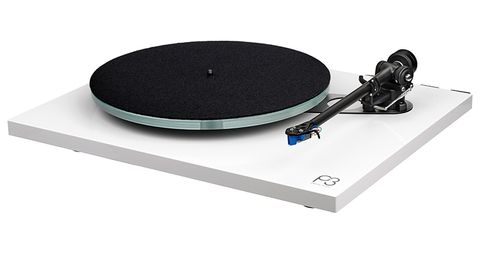Despite not being a favorite of the British hi-fi press, Ariston Audio developed a great line of turntables for a decade and a half. The Prestwick company received consistently positive feedback, but it never quite managed to inspire hi-fi enthusiasts in the same way that Linn and Rega did. Regardless, its commodities were well-received and deservedly so. The flagship RD11 was a wonderful high-end instrument, but the RD80, which performed admirably in the mid-price turntable market, was undoubtedly even more amazing.
It was practically a drastically cost-cut RD11, and it used a three-point suspension, AC synchronous motor, and 2.6kg two-piece machined mazak platter with screw-down record clamp to follow the traditional independently sprung subchassis belt-drive type. It offered 33.3 and 45 RPM, as expected, and kept those speeds admirably, with a stated wow and flutter of 0.08 percent. This was significantly worse than competing Japanese quartz-locked direct drives at the time, such as the Technics SL-120, although it was still well inside the 0.1 percent limit where speed instability becomes truly obvious. Rumble was measured at -75dB, which is an excellent if not remarkable figure.
The 445x360x170mm plinth was made of real wood-veneered fiberboard, with a wooden armboard and acrylic dustcover, and Ariston’s outstanding single-point bearing was installed. The majority of RD-80s left dealers with Linn Basik LV-V tonearms at first, then Basik LV-Xs, and finally Rega RB300s and Ariston’s own Opus tonearms. It was a wonderful match for the Rega, which was, of course, a fantastic performer for the money at £90. As a result, few people fared better than this.
The RD80 cost £180 at launch, which put it one notch above the Rega Planar 3 — rather than being a high-end mid-price deck, it pretended to be a ‘affordable high end’ design. The RD80SL emerged eighteen months later, in October 1983, with improvements to the electrical insulation to satisfy new Semco-Demco regulations. The platter was also redesigned, with the upper surface of the platter being slightly concave for better record-to-mat contact. It also allowed fine tuning of the motor pulley/belt angle and access to the tonearm beneath the baseplate without removing it. Finally, a new thick, well-damped rubber mat was ordered.
The RD80 got a lot of things right in terms of sound. The deck offered a wide, lively, musical sound with a good level of detail when properly set-up and the arm cable clothed. It was light, airy, and poetic, with a little warm tone to it. It possessed a deeper and more tuneful bass, a broader soundstage, and a fractionally more sharp treble than a Rega Planar 3. The RB80 wasn’t a world-beater — it trailed an RD11 or even the then-favorite Linn LP12 – but it provided enough of a performance boost over Planar 3 to warrant its higher price. It was a touch noisier, looser, and less polished than high-end decks of the time in absolute terms, but it was close enough to be considered a bargain at half their price.
You can get a nice one for £200 these days, fitted with a Linn LV-V tonearm or something like. They’re versatile enough to turn into excellent projects, or you may just listen to them! The RD80SL is the one to get, but it isn’t significantly better than the original, and the condition of the unit ultimately matters more than the model. The main problem with Ariston’s RD80 is that it’s not an iconic collector’s deck like the Thorens TD160, for example, but then again this does keep prices low!






